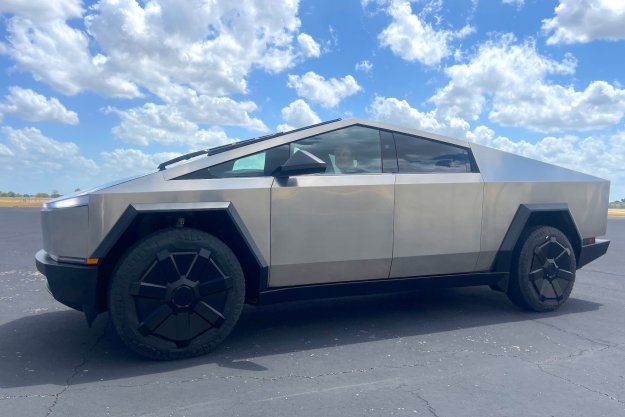
The race car started life as a classic Jeep CJ-7, but just about every single component was replaced, improved, or removed altogether. The engine is a highly modified V8 pulled out of the Ford parts bin and fitted with an array of upgrades, including a huge turbocharger. We don’t know how much horsepower the eight-cylinder sends to those massive rear tires, but it generates enough grunt for the Jeep to pop a wheelie after a launch.
The transformation involved putting the CJ-7 on a major diet. Most of the bodywork looks like it’s made out of composite materials such as fiberglass, and the interior is completely gutted except for a digital instrument cluster, a quick-release steering wheel, and a single bucket seat. There’s no top to speak of, so the only protection in the event of a rollover is a thick roll bar.
A parachute attached to the rear end supplements the brakes when needed. It’s a common equipment on dragsters, but on a Jeep it’s an interestingly heritage-laced feature. Representatives from the United States Army told designers who worked on the original Jeep Willys that it had to be small and light because they needed to be able to parachute it onto a battle field.
Interviewed by YouTube channel 1320video, the owner explained his intention was to build the fastest Jeep in the country. Asked why, he replied with a casual “why not?” He hasn’t reached his goal yet, but the build is fairly new so it still needs a little bit of fine tuning.
Editors' Recommendations
- The Ford Mustang could ditch its V8 and eventually go fully electric
- Hellcat-powered, 1,000-hp Jeep Gladiator is excess fit for a Roman emperor
- Walmart takes big price cuts to Dyson V8 and V10 cordless stick vacuums



